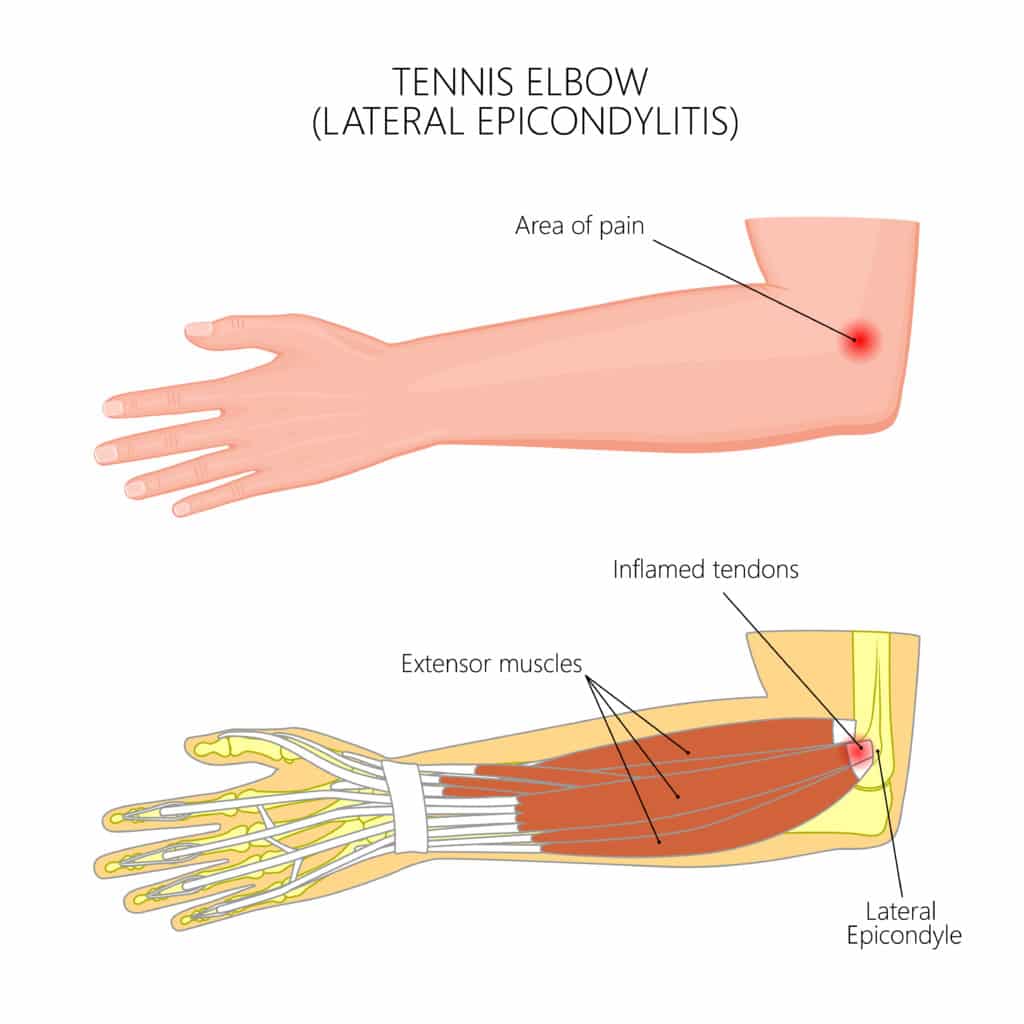Tennis elbow, while a common term many of us are familiar with, is more complex than it sounds. Visiting a medical clinic, you might be diagnosed with “lateral epicondylitis”, the technical term for this ailment.
Let’s delve into what it truly means and how to effectively treat it.
The Anatomy Behind Tennis Elbow

Tennis elbow is often associated with the extensor tendons. These are the crucial ligaments that enable you to extend your fingers and your wrist. Originating from the outside part of your elbow, these tendons can become aggravated due to repetitive gripping and grasping motions.
A Closer Look at the Condition
Contrary to popular belief, tennis elbow isn’t merely an inflammation of the tendon, akin to tendinitis. At a microscopic level, the ailment represents a mucoid degeneration of the tendon origin. To put it simply, the natural elastic properties of a normal tendon allow it to stretch and contract with hand movement. This elasticity is compromised when mucoid degeneration occurs, resulting in excessive stress on the insertion point at the bone. This exact point of undue pressure gives rise to the irritation of the bony prominence, leading to the condition we term as lateral epicondylitis.
Treating Tennis Elbow: A Holistic Approach
Understanding the deeper origins of tennis elbow is pivotal for its effective treatment. Addressing this condition requires a multi-faceted approach that:
- Tackles the degeneration of tissues.
- Alleviates inflammation or irritation at the bone.
- Enhances the elasticity of the overall soft tissues.
Physical therapy, among other conservative measures, proves to be highly effective in assuaging the symptoms. The root cause understanding guides the treatment strategy, ensuring patients receive the right care tailored to their specific needs.
Patience is Key
Tennis elbow, though challenging, is not insurmountable. While the pain and inconvenience can be discouraging, patients should remain persistent and committed to their conservative treatment regimens. With consistent effort and the right approach, surgery can often be avoided.
In conclusion, tennis elbow is more than just an overuse injury. A deeper understanding of its origins and mechanisms can help in seeking effective treatments and ensuring a quicker road to recovery.





